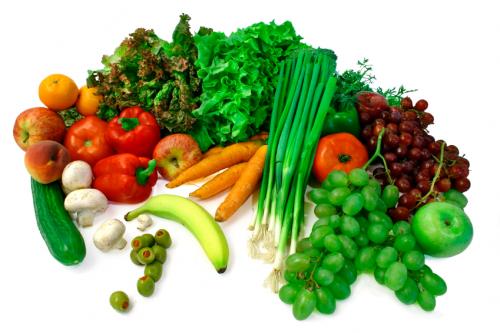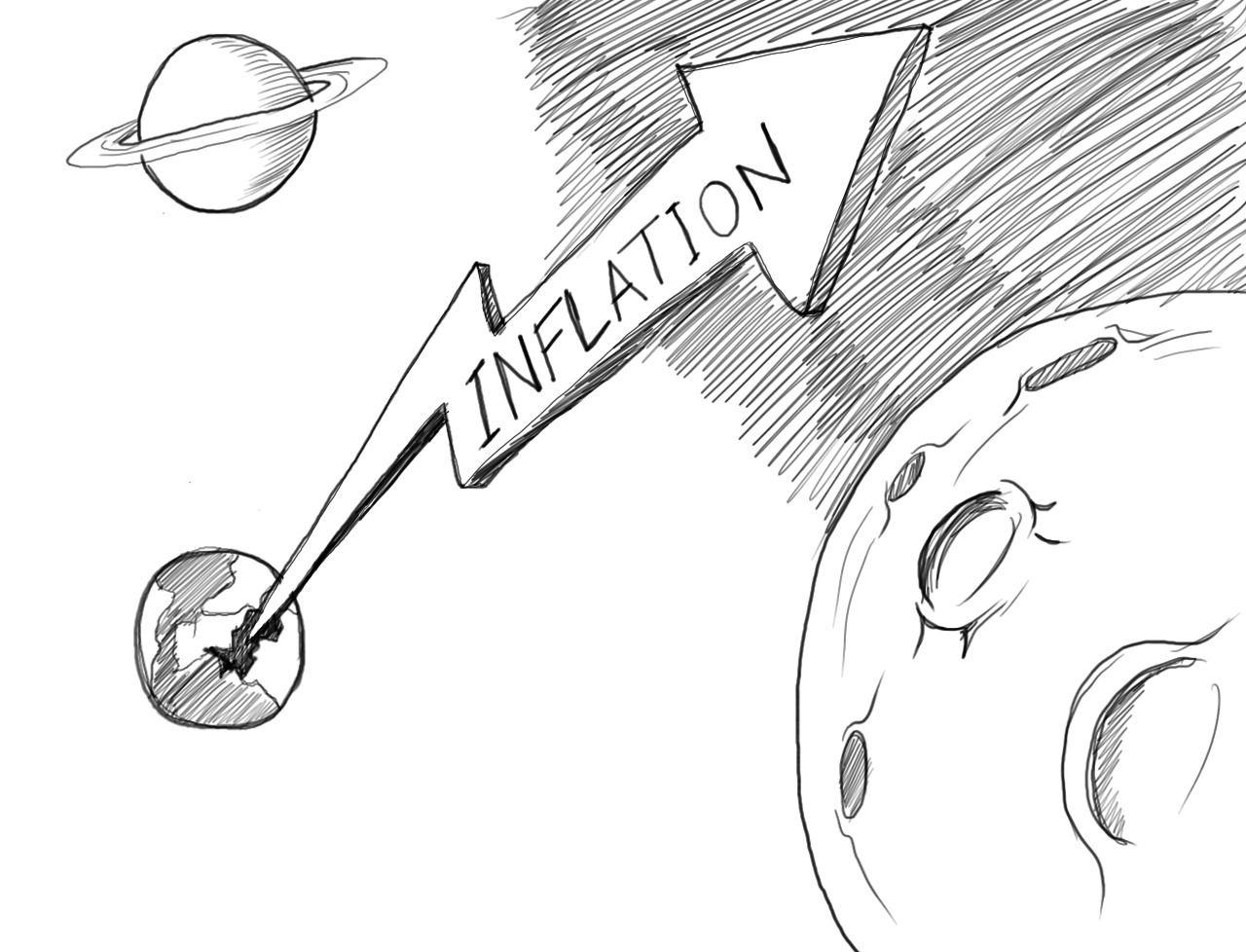Earlier this month, the the India Meteorological Department(IMD) forecast that the monsoon will be deficient this year. It said that the monsoon will be 88% of the long-term average. This number is lower than the 93% of the long-term average number, the IMD had forecast in April, earlier this year.
The IMD also said that the probability of a deficient monsoon was as high as 66%. The nation’s weather forecaster uses rainfall data for the last 50 years to define what is normal. If the rainfall forecast for the year is between 96% and 104% of the 50 year average, then it is categorised as normal. A forecast of between 90% and 96% of the 50 year average is categorised as below-normal. And anything below 90% is categorised as deficient.
Hence, a forecast of 88% of the long-term average means that the monsoon will be deficient this year. Further, with the rainfall being forecast as likely to be deficient, the fear is that food prices will start to go up during the months to come.
Data from the World Bank suggests that only around 35.2% of agricultural land in India was irrigated in 2010. The bank defines irrigated land as “areas purposely provided with water, including land irrigated by controlled flooding.” This number is a little dated but does tell us that a major part of Indian agriculture continues to remain dependent on rainfalls.
And if rainfalls turn out to be deficient chances are there will be an impact on agricultural production and in the process push up food prices. At least that is how things look theoretically. Nevertheless, things may not be as bad as they are being made out to be.
During 2014 monsoon season, the country as a whole received rainfall which was 88% of the long-term average. Hence, the rainfall last year was deficient. In fact, if we look at the numbers region-wise, the rainfall was around 79% of the long-term average in north-western India. States like Punjab, Haryana and Uttar Pradesh which produce a major part of food grains produced in India, come under this region.
Despite this, the impact on production was limited because these states have access to irrigation. As a recent report by Crisil Research titled A washout monsoon forecast, we cut GDP growth by 50 bps points out: “Given their reasonably high irrigation levels, agricultural production in Punjab (98% of total area cultivated has irrigation), Haryana (85%) and Uttar Pradesh (76%) were less affected by deficient rainfall last year.”
The question is how effective will the irrigation systems be the second time around. “Even with good irrigation cover in these states, two consecutive years of weak rainfall would bring down the effectiveness of irrigation systems…Ground water is recharged mainly through rainfall. As per IMD, rainfall deficiency in Punjab was 50% and Haryana at 56% last year. As a result, with agriculture relying more on ground water, two consecutive years of weak monsoon will have a significant impact on kharif crops. Plus reservoir storage levels in some states are alarmingly low,” Crisil Research points out. Given this, there will be some impact on agricultural production.
Hence, the government needs to act decisively and quickly to ensure that food prices do not go. As economists Taimur Baig and Kaushik Das of Deutsche Bank Research point out in a recent research note titled RBI signals no more cut; we still see room: “In 2002 and 2004, cumulative rainfall was down 19 % and 14% respectively, but thanks to an effective undertaking by the government that saw large scale disbursement from the government’s food stocks, inflation remained under control.”
In fact, the Narendra Modi government did the same thing when it came to power in May last year. One of the first decisions made by the government was to release 5 million tonnes of rice into the open market from the stocks maintained by the Food Corporation of India. News reports suggest that eventually only around 2 million tonnes was sold. But just the news that the government was selling was enough to contain inflation.
As Baig and Das point out: “Last year, a late start of the monsoon rains resulted in a sharp spike in food prices during July (+3.6% month on month). Food prices generally tend to be high in July, but the spike in 2014 was striking. The newly elected government responded with a number of administrative measures (open market sale of key foodgrains, crackdown on hoarders, imposing restriction on stocking limits of key vegetables etc.), which helped food prices to eventually ease from September onward.”
Also, imports will help, given that global food prices are at a six year low. As Crisil Reearch points out: “Importing some commodities will be useful, especially because global food prices have slumped to a six-year low following a bounteous output – international prices of oil seed prices for instance are down 24% year-on-year.”
While prices of food grains can be contained by releasing government stock into the open market, such a thing is not possible in case of vegetables, given their short shelf life. Hence, it is important that the government cracks down on hoarders, like it did last year.
As Ashok Gulati, former Chairman of the Agricultural Costs and Prices, wrote in a column inThe Financial Express: “A slew of measures were announced by the government to contain the damage from surging food inflation. It not only restricted exports of onions but also imported onions and dumped them in major onion markets at prices below import cost. It also used the stick and raided many onion traders/hoarders.”
While onions can be stored, this may not be true for most other vegetables. Also, a lot of vegetable produce goes bad before it reaches the market, hence, “lowering transportation losses will be crucial”.
Further, there will be great pressure on the government to increase the minimum support prices on agricultural crops. That is one sure fire way of pushing up food inflation.
It is worth remembering here that not many farmers benefit from the minimum support price system. The government announces the minimum support price of 24 agricultural crops, but largely buys, only two, wheat and rice, through the Food Corporation of India and other state procurement agencies.
The Shanta Kumar committee report points out that the total number of agricultural households who were able to sell rice paddy and wheat to the procurement agencies was 5.21 million. “The number of households comes to just 5.21 million (2.55 million paddy households during July-Dec 2012; 0.55 million paddy households during Jan-June, 2013; and 2.11 million wheat households during Jan-June 2013),” the report points out.
The figure of 5.21 million forms 5.8% of the total number of agricultural households of 90.2 million. In fact, this number is also on the higher side once one takes into account the fact that there are households that sell both paddy and wheat to the procurement agencies. Further, not all wheat and paddy is sold to procurement agencies at the minimum support price.
Once these factors are taken into account the minimum support price system doesn’t benefit many farmers and causes food inflation. Hence, it is important that the government stays away from the temptation of increasing minimum support prices by a big amount, something that it did last year as well.
To conclude, in order to control food inflation, it is important that the government do same things that it did last year.
(Vivek Kaul is the author of the Easy Money trilogy. He tweets @kaul_vivek)
The column originally appeared on Firstpost on June 11, 2015


